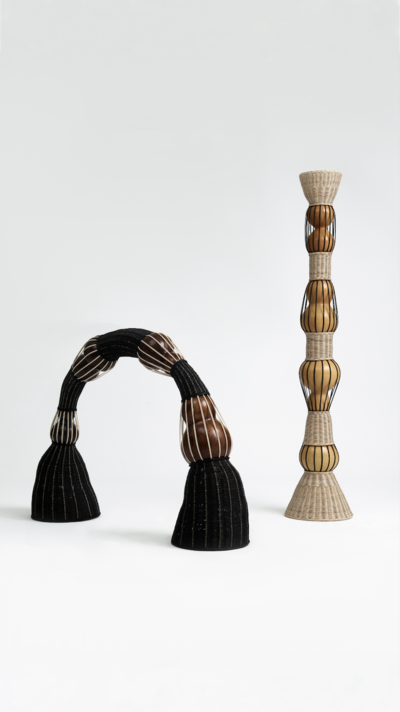Zhongyu Zhang

HULU Ipū
In HULU Ipū, I use the « inferior calabash » as an entry point. In this work, I have preserved the almost invisible natural traces of the fruit itself, chosen the “inferior gourd” with the almost perfect curvature of its side waist, so that the gourd can quietly sneak into human society and become a HULU, reminding mankind that the gourd itself has a life force. This series uses the more productive gourd as the subject of this study, looking at the relationship between the gourd as a “plant” and an “industrial product”.
HULU Ipū is treated with a wood preservative process that creates a leather-like texture, with the surface colour changing over time, and is joined by a bamboo weaving process. This sophisticated process is inspired by the bamboo filigree button porcelain and has similarities to the traditional packaging of ceramics in Jingdezhen. The rattan can be organically fitted to the irregular gourd, not only for structural support, but the stitching details emphasise the gourd’s rhythmical breathing unlike that of wood. The rattan itself is not perfectly straight, as the weft often controls the overall form of the weave, and the overall installation takes on a paradoxical tension while respecting the design principles of the material.
The gourd was often used as a container for transporting seeds during the period of the transatlantic slave trade. It was also used for panning rice and sharing meals; used as a gourd, ipu heke. This cross-cultural resonance becomes a testimony to the fact that common sense can be created in all cultures. Taking this a step further, it might be useful to borrow from the British social anthropologist Alfred Gell, “The technology of enchantment is founded on the enchantment of technology”. The material, the technology, or the artefact we are discussing, has a universal meaning in itself, and this universality creates enchantment.
